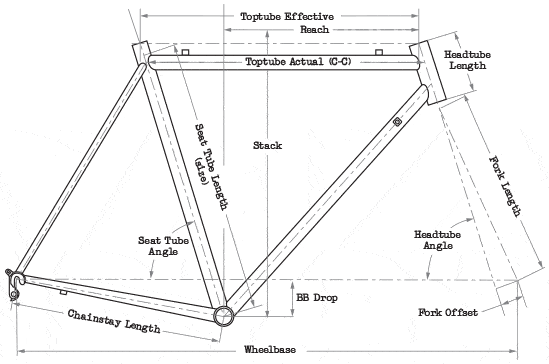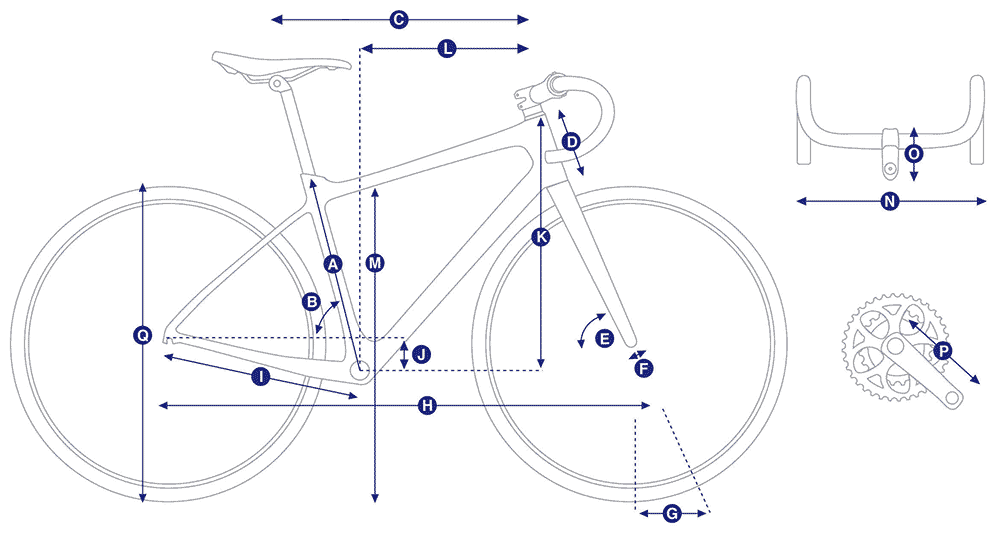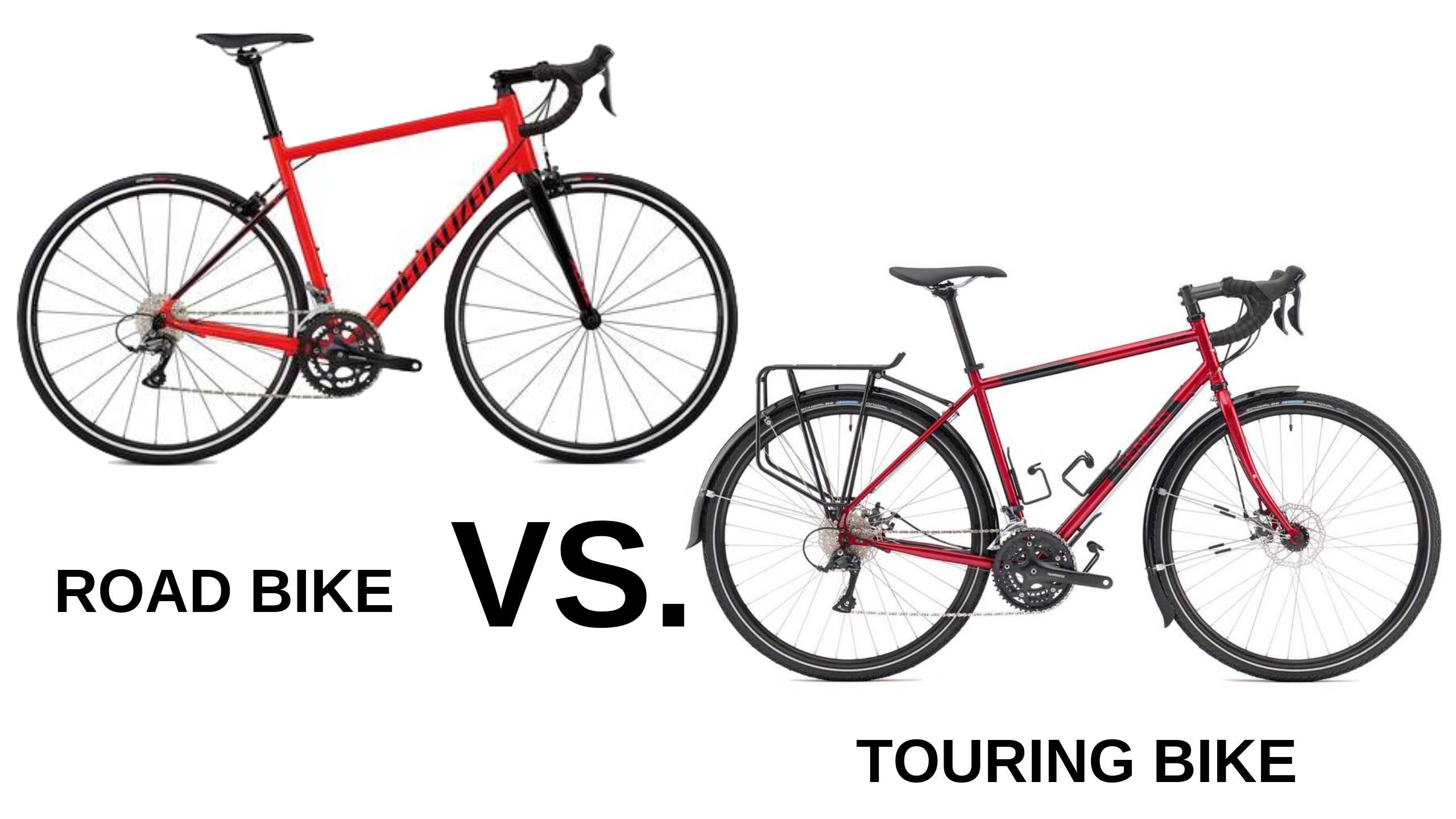Road bikes and Touring bikes are very different types of bikes when you look at what each of them are designed to do. So, what is the difference between a road bike and a touring bike?
I have toured on a road bike for up to 1 whole week and have learnt first hand the differences between the two types of bikes.
In short, a road bike is built for lightweight, speed and stiffness. Used more for on road smooth surfaces, in racing and day ride recreation. While a touring bike is built for strength, comfort and stability. As these bikes are meant to carry much heavier loads then just the rider. For many days, months or even years on end.
I toured on a Giant Defy with a Aluminium frame, which is not recommended for bicycle touring as this material is weaker then other options out there.
Construction
Lets start by talking about the physical differences in the two types of bikes.
The construction of a touring bike if made to withstand significant loads and stress on the frame and other parts of the touring bike. For this steel is the main frame material used for touring bikes. Steel is much more comfortable than aluminium. Steel acts as a cushion for body contact points on the bike, such as hands, bum and feet. resulting in a overall more comfortable ride.
The material used for most road bikes is either aluminium or carbon. And are not designed for hauling extra weight and does not need that extra stability a steel frame offers.
Due to road bikes being lighter then a touring bike. I you use a road bike for touring that lightweight with a heavy load, will result in a unstable riding feel. With a heavier bike it seems to ride that much more easier with a full load.
More Touring Bike Differences
Generally touring bikes offer attachment points for front and rear racks. Also up to three mounting points for water bottles. The eyelets that come with all touring bikes will sometimes not come with a road bike.
Also touring bikes have attachment points and appropriate clearance for fenders.
Lower gearing, which allows for easier riding on up hills with a full loaded bike.
The riding posture on a touring bike is more upright and comfortable. Due to the length of time spent riding everyday.
Most touring bikes have different types of handlebars. In comparison to road bikes standard drop bars. Tour bikes offer trekking/butterfly handlebars, and other bars which provide many different hand positions.
Then frame and wheels of a touring bike is stronger. Due once again to the expected amount of extra weight the bike must haul.
Touring bikes may also have a more comfortable saddle compared to a road bike.
The tyres on a touring bike varies depending on the type of touring bike. Off road touring bikes have very much wider tyres, while long distance road touring bikes still will have thicker tyres then 23mm road bike tyres. Making them more puncture proof in comparison.
More Road Bike Differences
The geometry of a road bike causes the riding position to be more aggressive and made for speed and aerodynamics in mind. This design helps the rider inputs react quickly and to have a low centre of gravity which is beneficial when cornering.
Everything is lightweight in comparison. Light wheels.
The wheels on road bikes are almost always 700c or even smaller on very small frames. the typical tyre size is thin, most common being 23 mm.
Wheelbase and Chain-stay
The wheelbase is one of the most important differences to be able to distinguish between a touring bike and a road bike.
Road bikes are built typically with a shorter distance between the front and rear axles. Providing more responsive feel while riding. With a touring bike the rear wheel is somewhat further back and will feel a little less responsive. However this longer distance wheelbase results in a more comfortable ride. And the greater distance from your pedalling feet to the rear panniers on a touring bike. Mean that you are not grazing them as you pedal.
Geometry
Touring Bike Geometry

Above is a detailed look at a standard touring bike geometry design. Lets dive deep and talk about all the different parts that make up a touring bike. The diagram is based of the Surly LHT which is a world renowned touring bike. Keep in mind that some of the measurements are slightly different depending on the bikes size. For this example we are looking at a 700c size 56 cm Surly Long Haul Trucker which we will compare to a average road bike option to compare the geometry.
- The Headtube angle is 72.0°, bringing the handlebar closer toward you for a more upright posture with the correct sized stem
- Wheel base is longer at 1055.6 mm, providing more stability and better steering when under a heavy load.
- The chain stay length is 460.0 mm which provides more clearance for your legs from the rear panniers. It also moves your pannier further from your bottom bracket so that weight is distributed better between both wheels.
- The BB Drop or Bottom Bracket Drop is 78 mm, is closer to the ground on a touring bike compared to a road bike creating a lower centre of gravity. This aids in the stability of the bicycle under heavy loads.
Below is some more measurements for you to geek out on to fully understand. Next we are going to look at a road bike geometry and compare the pair.

56cm (700c) Sized Bike | Surly LHT (Touring Bike) | Giant Defy Advanced 2 (Road Bike) |
|---|---|---|
| Reach | 389.3 | 390 |
| Stack | 588.0 | 605 |
| Head Tube Angle | 72.0˚° | 72.5° |
| Head Tube Length | 152.0 | 205 |
| Seat Tube Length | 560.0 | 535 |
| BB Drop | 78.0 | 70 |
| Wheelbase | 1055.6 | 1025 |
| Chainstay Length | 460.0 | 420 |
| Top Tube Length, Actual | 564.5 | 575 |
| Seat Tube Angle | 73.0° | 73.0° |
| Standover Height | 811.9 | 835 |
| Stem Length | 100 | 110 |
| Crank Length | 175 | 175 |
| Fork Rake | 45.0 | 50 |
